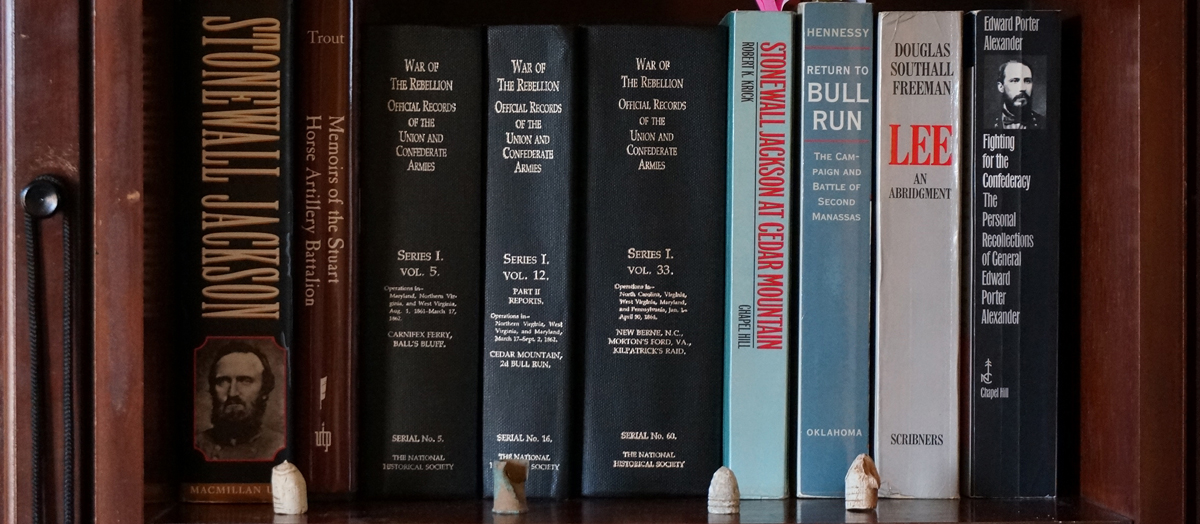Extract from letter of Colonel Hazael Joseph Williams, Fifth Virginia Infantry, on the Battle of Cedar Mountain, Virginia, August 9, 1862.
August 17, 1886.
The distance my regiment was from the Culpeper Road was about 600 yards. (The regiment of the brigade were arranged as follows: Right [to left] Twenty-seventh Virginia, Thirty-third Virginia, Fifth Virginia, Second Virginia, Fourth Virginia.) The two regiments on my right was held back by a charge being made by a brigade of Federals, under the command of Colonel [Joseph Farmer] Knipe, if I mistake not.
Just at this time my regiment and the Second and Fourth Virginia Regiments entered a large wheat field. About midway in this field we met the enemy’s skirmish line and drove them back to the woods at the further side of the field, when about the middle of the field, I received orders to fall back and connect my line with the two regiments on my right, and as I halted my regiment for the purpose of about-facing them, I discovered that we were in the rear of the Federal line on my right (which was engaged with the Twenty-seventh and Thirty-third Virginia). This gave me the opportunity of swinging around and covering a part of their rear, causing them to surrender.
My regiment was large; I went in with 519 muskets. My regiment was the only one that was wheeled around; the other two on my left moved on across the field and protected me [from] the Federals on the left.
The distance I had advanced ahead of the two regiments on my right, I think, was about 400 yards, not more.
Lieutenant-Colonel [Lawson] Botts of the Second Virginia says in his report “By order of Colonel [Charles Andrew] Ronald, commanding, the brigade was moved to the front. Almost immediately afterward a regiment of the enemy appeared on the other side of the field. This regiment, though supported by others in the wood, fled after a short resistance, and the Second Regiment, with the Fourth and Fifth, drove the enemy through the wood they occupied.
Finding no enemy in the front, and that the right wing of the brigade was pressed, the Second Regiment was ordered to its support, Captain [Samuel Johnson Cramer] Moore of Company I, being left with a strong company to scout the wood and prevent surprise.”
First Sergeant Thomas Slagg, Company K, Third Wisconsin (a company of which had been ordered to support the charge upon the battery in the Culpeper Road, but for some reason, did not advance with the column), writes that they marched to the fence (on our side of the wheat field, and near its northern end, or on our extreme right), got over it, and advanced perhaps 200 yards when the enemy rose from behind the swell of ground, (nearly midway of the field) and poured into us a most destructive fire.
I should think we stayed there ten of fifteen minutes and fell back to the fence. Part of our men went further but were rallied and brought back to the fence, which we lay behind until the enemy charged upon us from front and right, when we left and did no more fighting that day.
[HAZAEL JOSEPH WILLIAMS.]
[Found in the Samuel J. C. Moore Collection, Southern Historical Collection, Library of the University of North Carolina at Chapel Hill]
Transcribed by Michael Block.
 Print This Post
Print This Post

